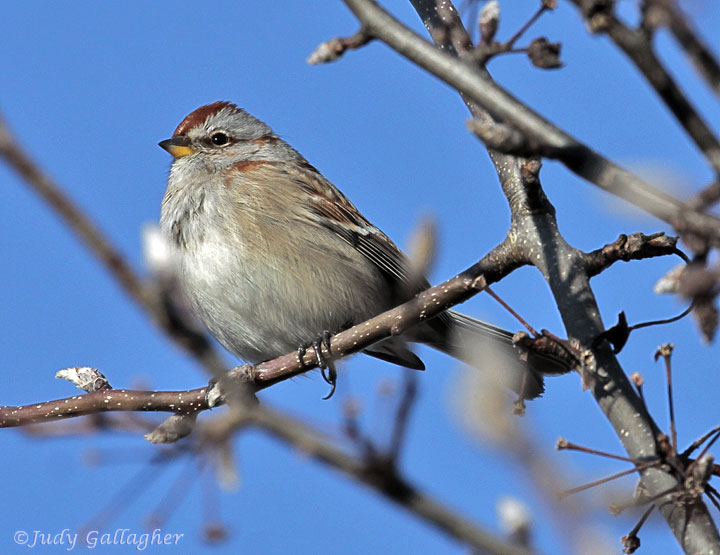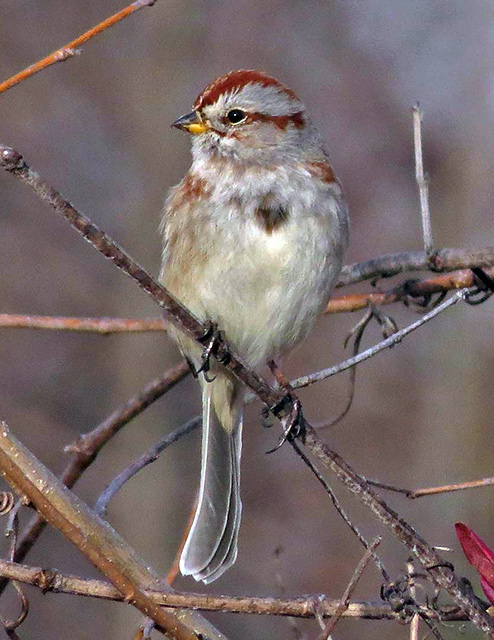
Photos Above © Judy Gallagher; Occoquan Bay National Wildlife Refuge, Woodbridge, VA; January 2010 Left © Janis Stone; Occoquan Bay National Wildlife Refuge, Woodbridge, VA January 2015 Text by Ellen Katinas |
|
American Tree Sparrow When snow is falling, the American Tree Sparrow is all about teamwork. Visit a North American or Southern Canadian field during winter, and you may see them in small flocks, scratching the ground for food and staying in almost constant vocal contact with one another. (You’ll know them by their rusty red caps.) Don’t be fooled by their soft, musical calls. American Tree Sparrows are determined foragers. A blizzard won’t stop them. Stubborn seeds present no problem either. Observers have seen the sparrows persistently beat their wings against the grass, not stopping until the seeds break free to provide a feast. When snowmelt arrives, things change. The sparrows begin their long migrations to breeding grounds in the far North. Also, flocks dissolve as males and females pair up. Lastly, the birds begin to eat more insects, devouring flies and beetles and plucking mosquitoes from the air. Eggs are laid. The chicks perform a neat trick, hatching within hours of each other although the 4-6 eggs may have been laid over as many days. Already round-bodied, this sparrow loves to fluff out his feathers, making his plump body look even plumper. Unless he eats and drinks 30 percent of his body weight each day, he will lose weight swiftly and die. An equivalent diet for humans would show us a 200-pound man consuming 60 pounds of food from sunrise to sunset. You can encourage American Tree Sparrow visits by installing a backyard feeder filled with seeds, or just scattering millet over the ground. The birds adapt well to human neighbors, and even predators like hawks and owls have had little effect on their population. |






